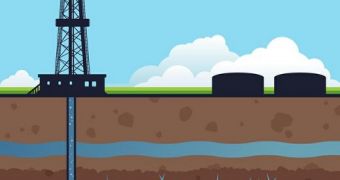The US Geological Survey has recently released a new study focusing on the natural resources presently available in the Utica Shale (i.e. a stratigraphical unit underlying much of the northeastern US and certain regions of Canada).
Odds are that numerous drilling companies will be quite content when coming face to face with this report, given the fact that, if the US Geological Survey's estimates are correct, as much as 38 trillion cubic feet of natural gas still rest undiscovered in areas under Maryland, New York, Ohio, Pennsylvania, Virginia and West Virginia.
Seeing how the future of the energy industry in the US is presently a rather controversial issue, it comes as good news that decision makers can now rely on supposedly accurate information concerning the country's available natural resources when coming up with new development policies.
As the Coordinator for the US Geological Survey's Energy Resources Program, Brenda Pierce, points out, "Understanding our domestic oil and gas resource potential is important, which is why we assess emerging plays like the Utica, as well as areas that have been in production for some time."
Furthermore, "Publicly available information about undiscovered oil and gas resources can aid policy makers and resource managers, and inform the debate about resource development."
According to the official website for the US Geological Survey, the Utica Shale also contains roughly 940 million barrels of unconventional oil resources, and about 9 million barrels of unconventional natural gas liquids such as ethane and propane.
As the report puts it, "The source rocks generated petroleum that migrated into adjacent units, but also retained significant hydrocarbons within the matrix and absorbed to organic matter of the shale."
Furthermore, "These are potentially technically recoverable resources that can be exploited by using horizontal drilling combined with hydraulic fracturing techniques."
However, odds are that most green-oriented organizations will not approve of such developments in the US energy industry, especially given the fact that quite a lot of previous studies have linked practices such as hydraulic fracturing to significant negative impacts on the environment.

 14 DAY TRIAL //
14 DAY TRIAL //